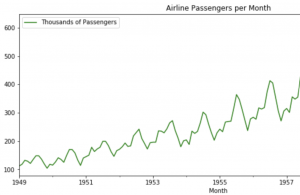
Time-series machine learning models are becoming increasingly popular due to the large volume of data that is now available. These models can be used to make predictions about future events, and they are often more accurate than traditional methods. However, it is important to properly evaluate (check accuracy by performing error analysis) and validate these models before you put them into production. In this blog post, we will discuss the different ways that you can evaluate and validate time series machine learning models. We will also provide some tips on how to improve your results. As data scientists, it is important to learn the techniques related to evaluating time-series models.
Steps for checking accuracy or performing error analysis of time-series models
One of the most important things that you need to do when evaluating a time series machine learning model is to perform error analysis. This involves calculating the error between the predicted values and the actual values for each data point. You can then use this information to determine how accurate the model is. There are a few different ways that you can perform error analysis. The following is a list of steps that you can use to check the accuracy of your time series models or perform error analysis:
- Seasonality impact: Time series models are impacted by time cycles such as daily, weekly, monthly, or any recurring cycle. It is recommended to analyze prediction errors across different cycles. If the errors are seen across different cycles, one can try adding more time-based features to the training data set. Recall that seasonality is defined as a repeating pattern of events that occur at fixed intervals of time.
- Trends analysis: Make sure your model is capable of tracking broad rises and falls. In other words, it does not outperform or underperform in rising or declining trends.
- Model reactiveness: This is the model’s ability to react quickly to changes in data distribution that aren’t caused by a trend or cycle. Try adding short-term rolling or lagging features if the model is slow to react to sudden data distribution changes. If the model predictions change very swiftly, try adding longer-term rolling or lagging features.
- Evaluation metrics choice: It is important to decide which metrics to use out of mean squared error (MSE) or mean absolute error (MAE). Performing error analysis with mean squared error loss is appropriate for models that can react to sudden changes in the data distribution. On the other hand, metrics such as mean absolute error is most appropriate for models that don’t change swiftly based on changes in data distribution. If the data distribution changes are unexpected and ignorable, it may be a good idea to use MAE. If it’s important to be reactive to the changes in data distribution, you can as well consider using MSE.
- Holidays consideration: Make sure to check the effect of holidays on the day and the period around them, AND, not just the day or holiday. If the model struggles to perform just before and after holidays, try adding features that tell your model that’s it’s close to a holiday.
- Model bias analysis: Make sure that your model is not over-forecasting or under-forecasting in a consistent manner. If that is happening, try adding more data. In addition, try checking the data quality as this has been found to be a common issue that can cause the model to consistently over-forecast or under-forecast. Sometimes the data you’re working with is not in a clean format. This can cause your machine learning model to perform poorly. Make sure you clean up your data before training your model.
- Different machine learning algorithms: If you’ve already tried different feature engineering and your data doesn’t seem to be responding, you can try switching machine learning algorithms. Different algorithms have different strengths and weaknesses, so this could be the solution that your data needs.
- Model performance in production: Make sure to check the time-series model deployed in production continues to perform well. If it is found that the model performance starts to vary too quickly, it may be a good idea to consider increasing the length of the roll-forward evaluation windows.
Steps for validating the time-series model
Here are a few steps that you can use to validate your time series machine learning models:
- Compare the results of your model with those of a baseline method, such as a simple moving average.
- Compare the predictions of your model against actual data.
- Use rolling windows to test how well the model performs on data that is one step or several steps ahead of the current time point.
- Compare the predictions of your model against those made by a human expert.
- Use machine learning techniques, such as k-fold cross-validation, to test the generalization accuracy of your model.
Time series machine learning models are important for businesses to accurately predict future trends. The evaluation and validation of these models is essential to ensure that they are working properly and providing accurate predictions. In this blog post, we outlined the steps that you can take to evaluate and validate your time series machine learning models. You can use these steps to perform error analysis and check the accuracy of your time-series models.
- Mathematics Topics for Machine Learning Beginners - July 6, 2025
- Questions to Ask When Thinking Like a Product Leader - July 3, 2025
- Three Approaches to Creating AI Agents: Code Examples - June 27, 2025
I found it very helpful. However the differences are not too understandable for me